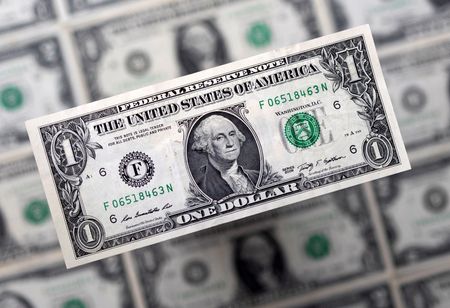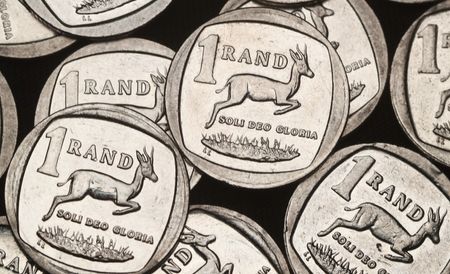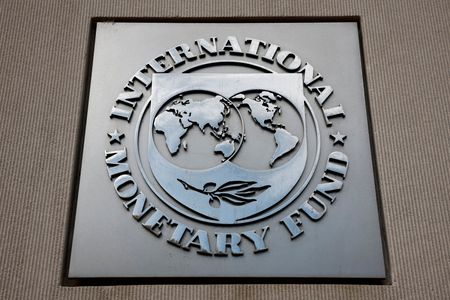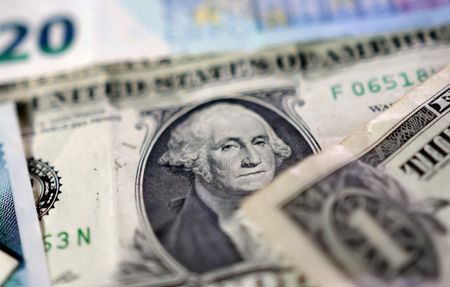By Kevin Buckland and Linda Pasquini
TOKYO/GDANSK (Reuters) -The U.S. dollar extended losses on Wednesday following its biggest decline in more than three weeks overnight, after weaker-than-expected U.S. consumer inflation data bolstered the case for Federal Reserve easing just as global trade tensions cool.
The euro was up 0.33% at $1.1222, the pound rose 0.24% to $1.3335, while the dollar fell 0.96% against the Japanese yen to 146.04..
That left the dollar index, which tracks the unit against six main peers, down 0.40% at 100.58.
“After the optimism of the past couple of days, the market is back to being very skeptical and fearful, perhaps of the uncertainties that are ahead,” said Rabobank’s head of FX strategy Jane Foley.
“We have certainly seen the dollar behaving as a risky currency” since the tariff announcement on April 2, she said.
Traditionally the dollar appreciates when investors are nervous about global growth, moving in the opposite direction to other ‘risk on’ assets like stocks.
The dollar index rose 1% on Monday and touched a one-month peak on investor hopes a de-escalation in U.S.-China trade tensions would avert a global recession.
But it shed 0.8% on Tuesday after data showed consumer price index increased by 0.2% last month, below expectations of economists polled by Reuters for a 0.3% gain, after a 0.1% dip in March data.
While a soft CPI was the trigger for the correction, a weakening in the dollar shows “a clear preference” for strategic selling of the currency ahead of a potential deterioration in U.S. data, ING currency analyst Francesco Pesole said in a note.
Investors were also digesting news South Korea’s Deputy Finance Minister Choi met with Robert Kaproth of the U.S. Treasury on May 5 to discuss forex markets, which helped send the dollar to its lowest in a week against Korea’s won.
It was last down 1.3% to 1397.35 won.
The talks “seemed to reinforce market suspicions of a US administration that appears to be leaning toward a preference for a weaker dollar. KRW is up over 1% on the day and Asian currencies are leading gains in FX,” said analysts at Scotiabank.
Thursday is the next significant day for events, with April’s U.S. retail sales, PPI and a speech from Fed Chair Powell.
The U.S. central bank has adopted a wait-and-see stance as it gauges the economic impact of the U.S. tariff campaign.
More clarity over Trump’s often erratic trade edicts could lead the Fed to resume interest rate cuts.
Traders price in about 53 basis points of rate reductions between now and the end of the year, according to LSEG data, and expect the next quarter-point cut in September.
(Reporting by Kevin Buckland and Linda Pasquini; Editing by Sonali Paul, Kate Mayberry and Barbara Lewis)







